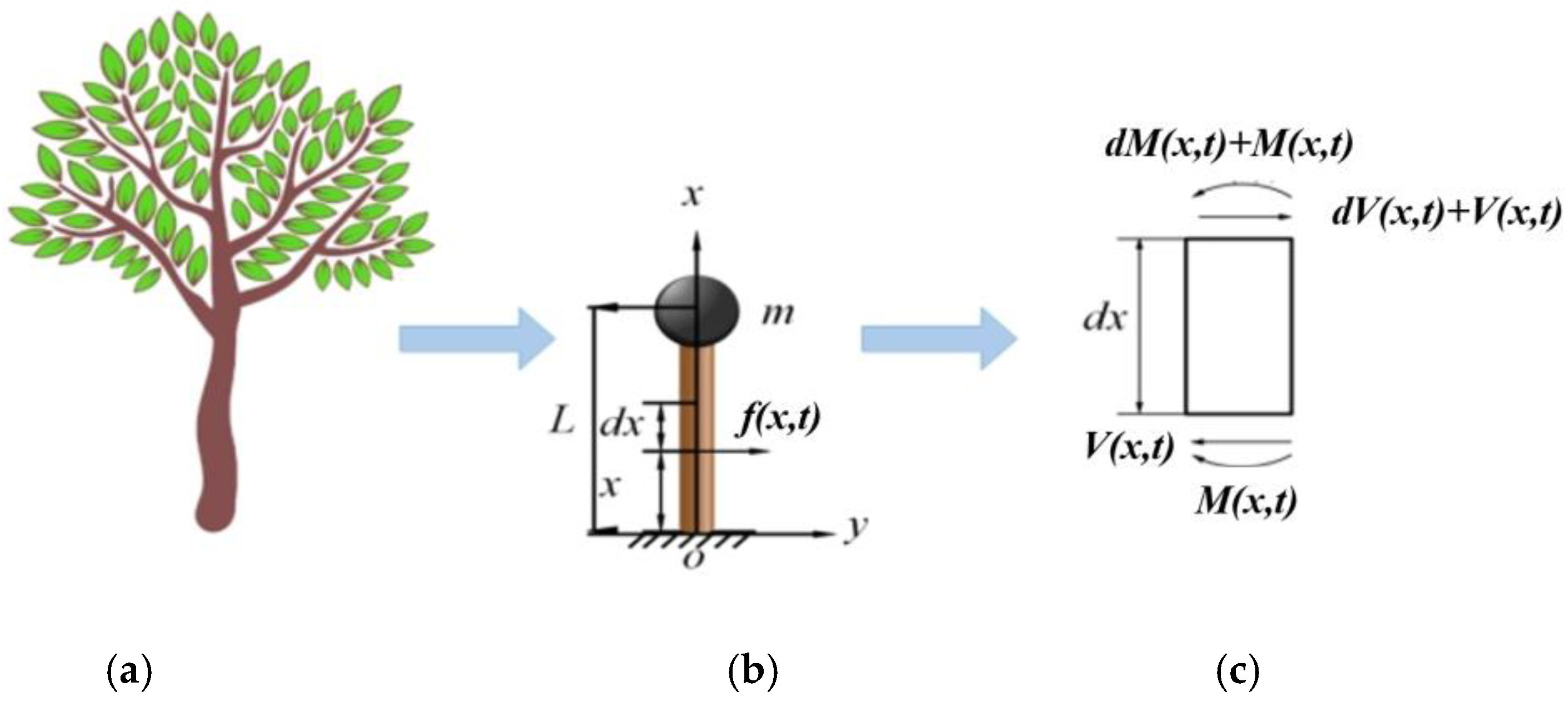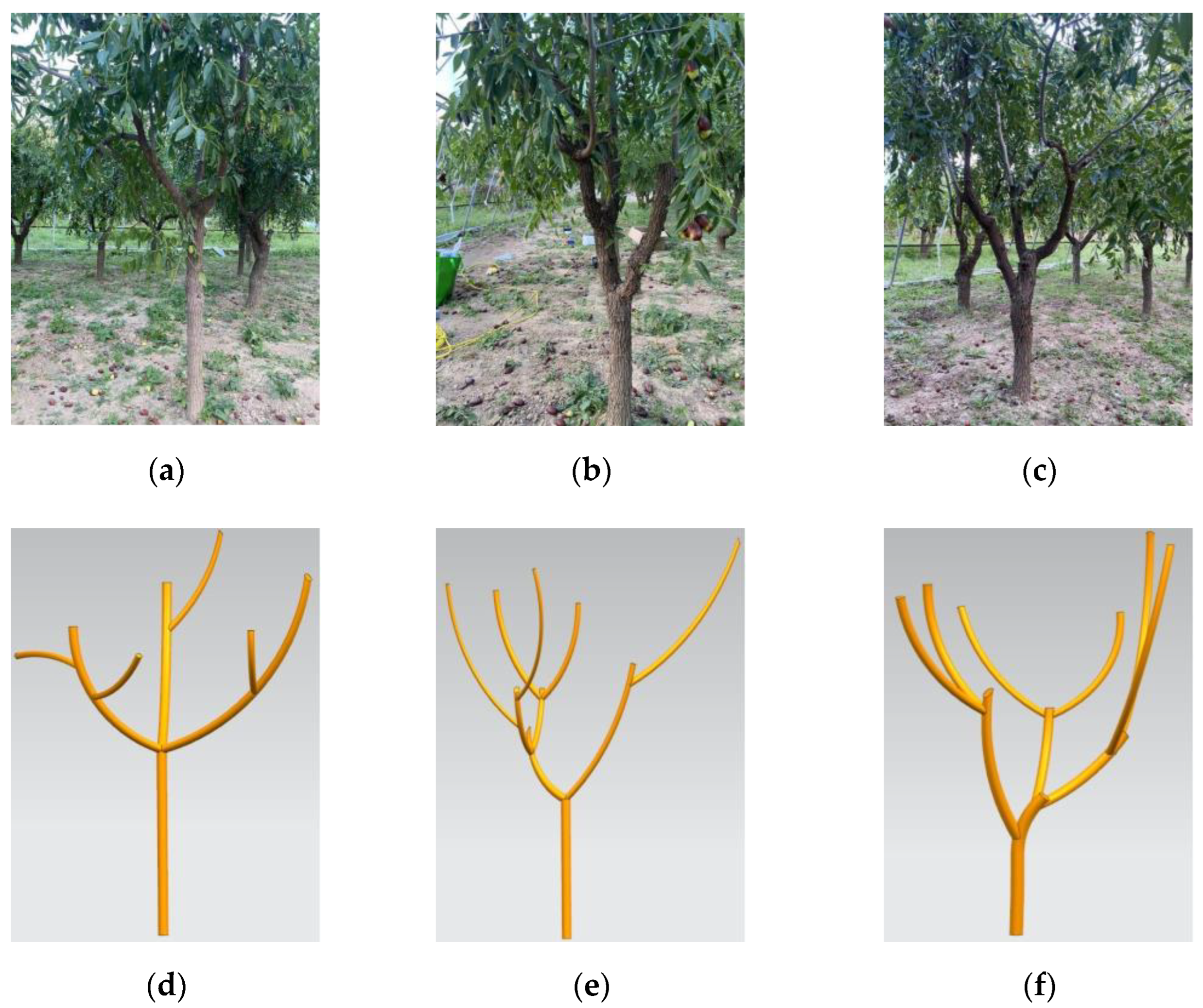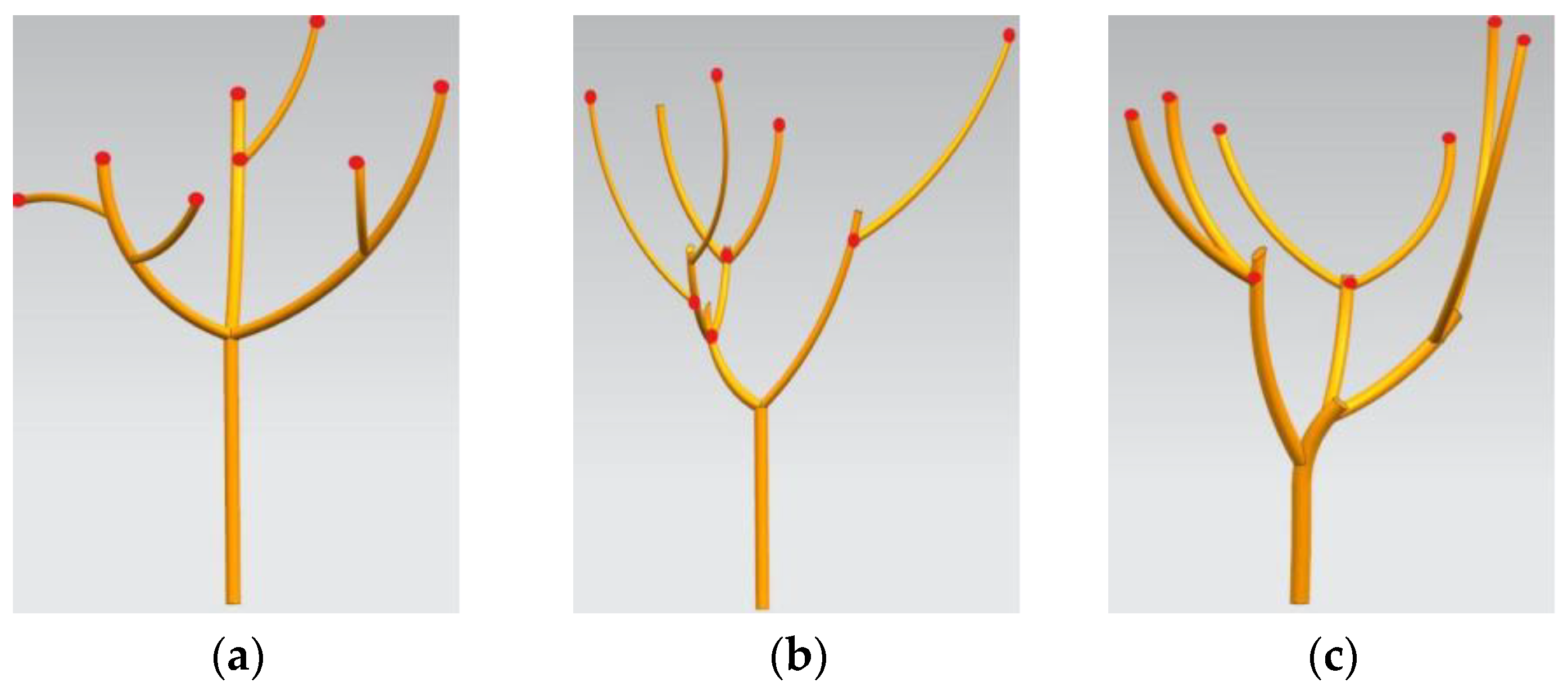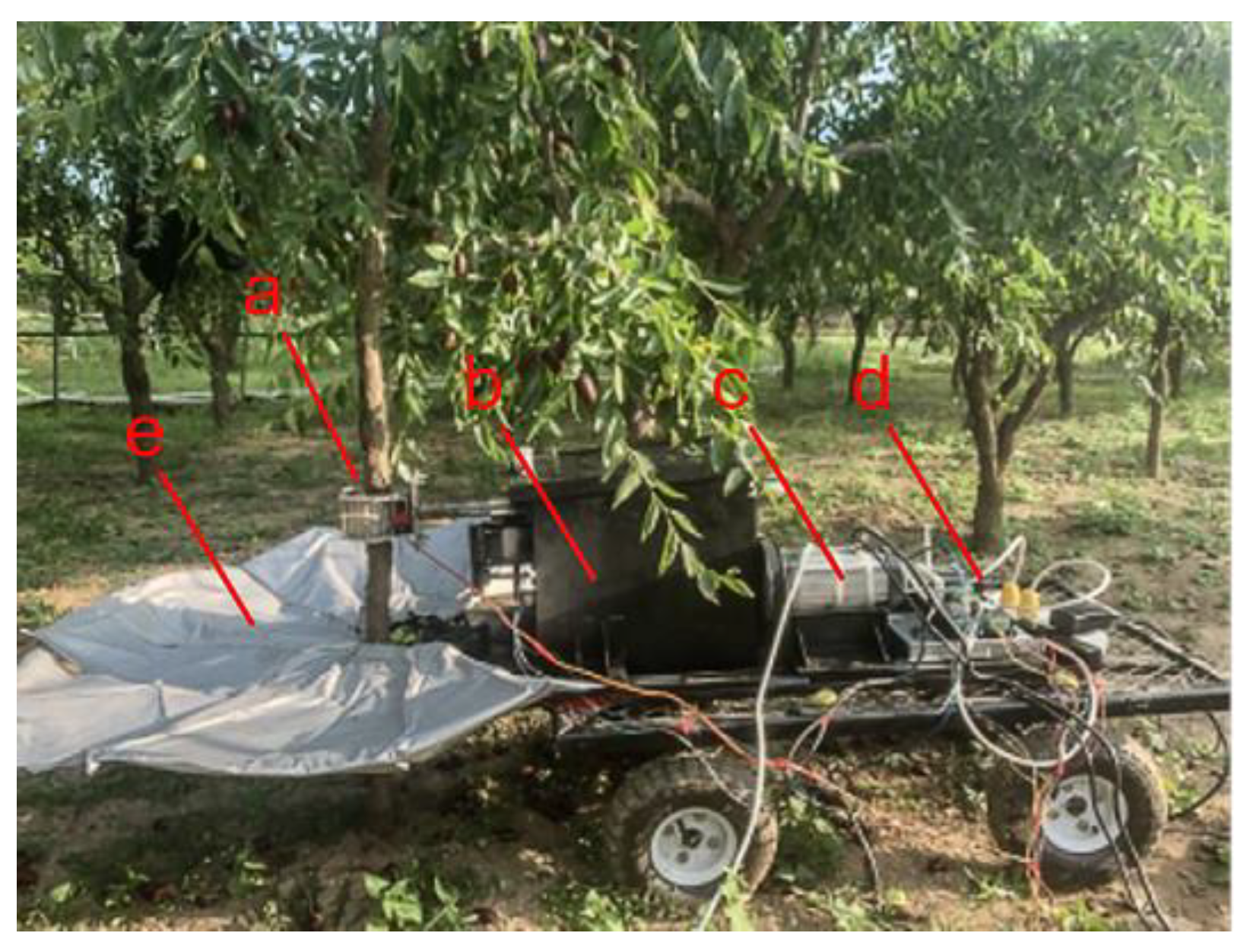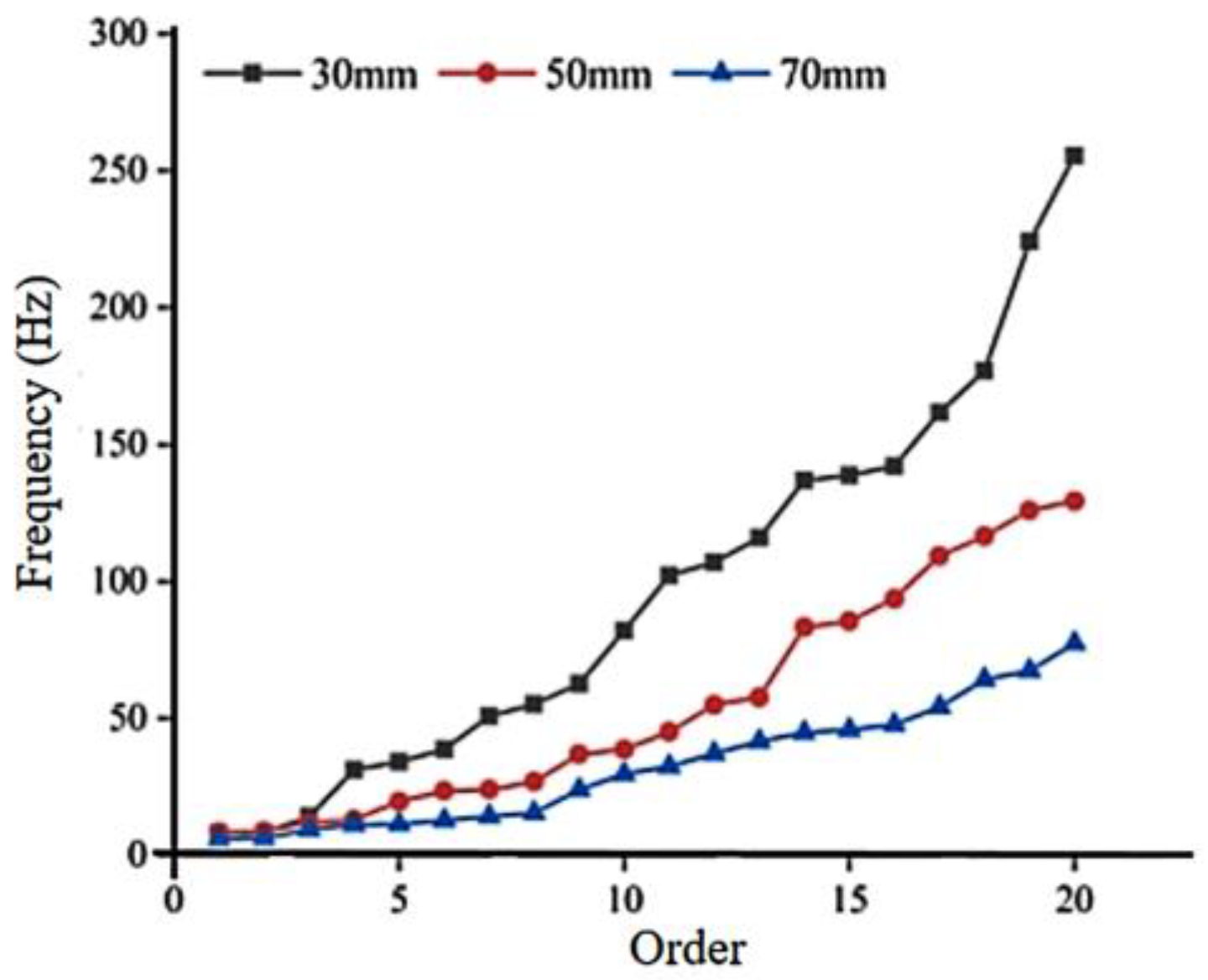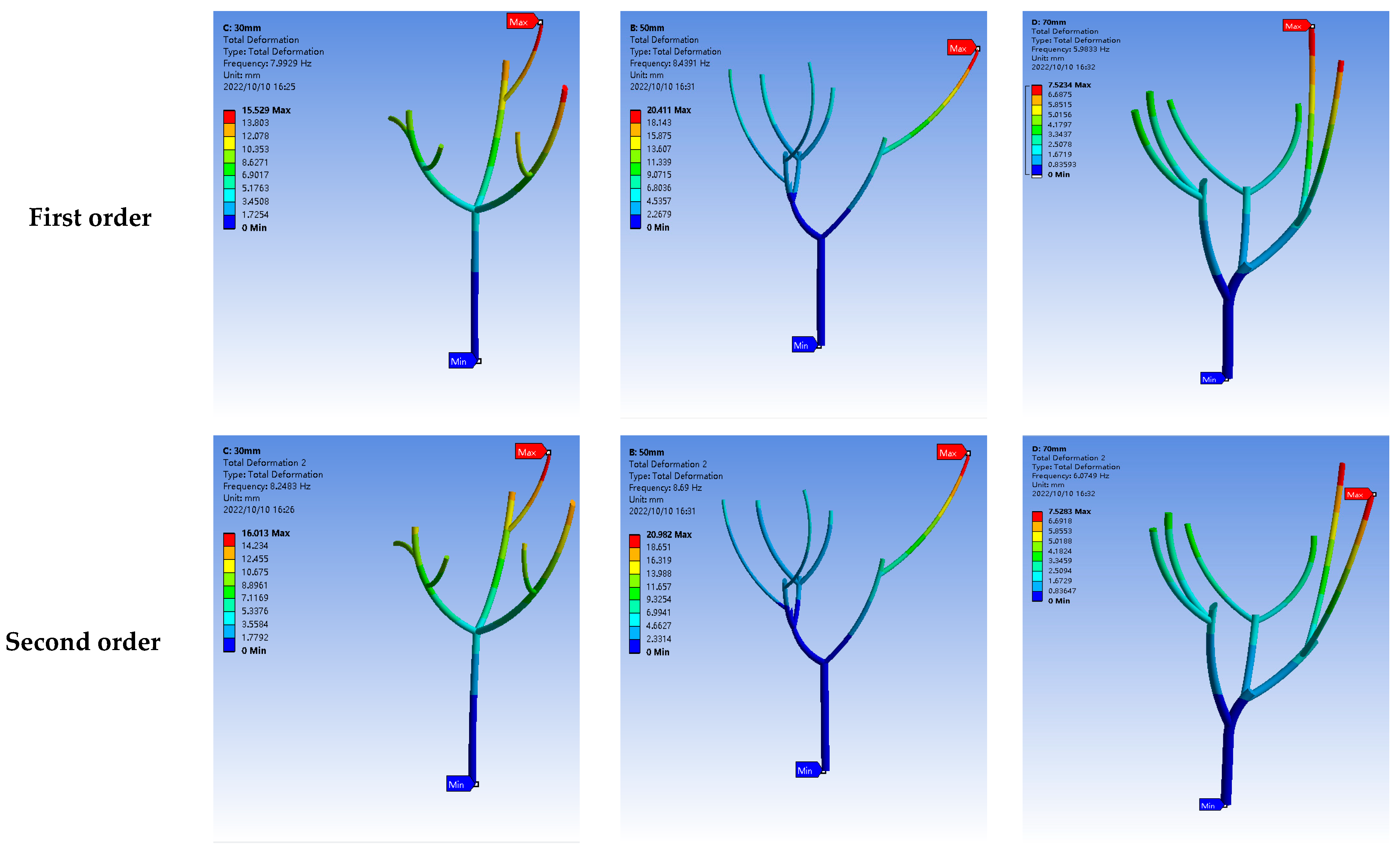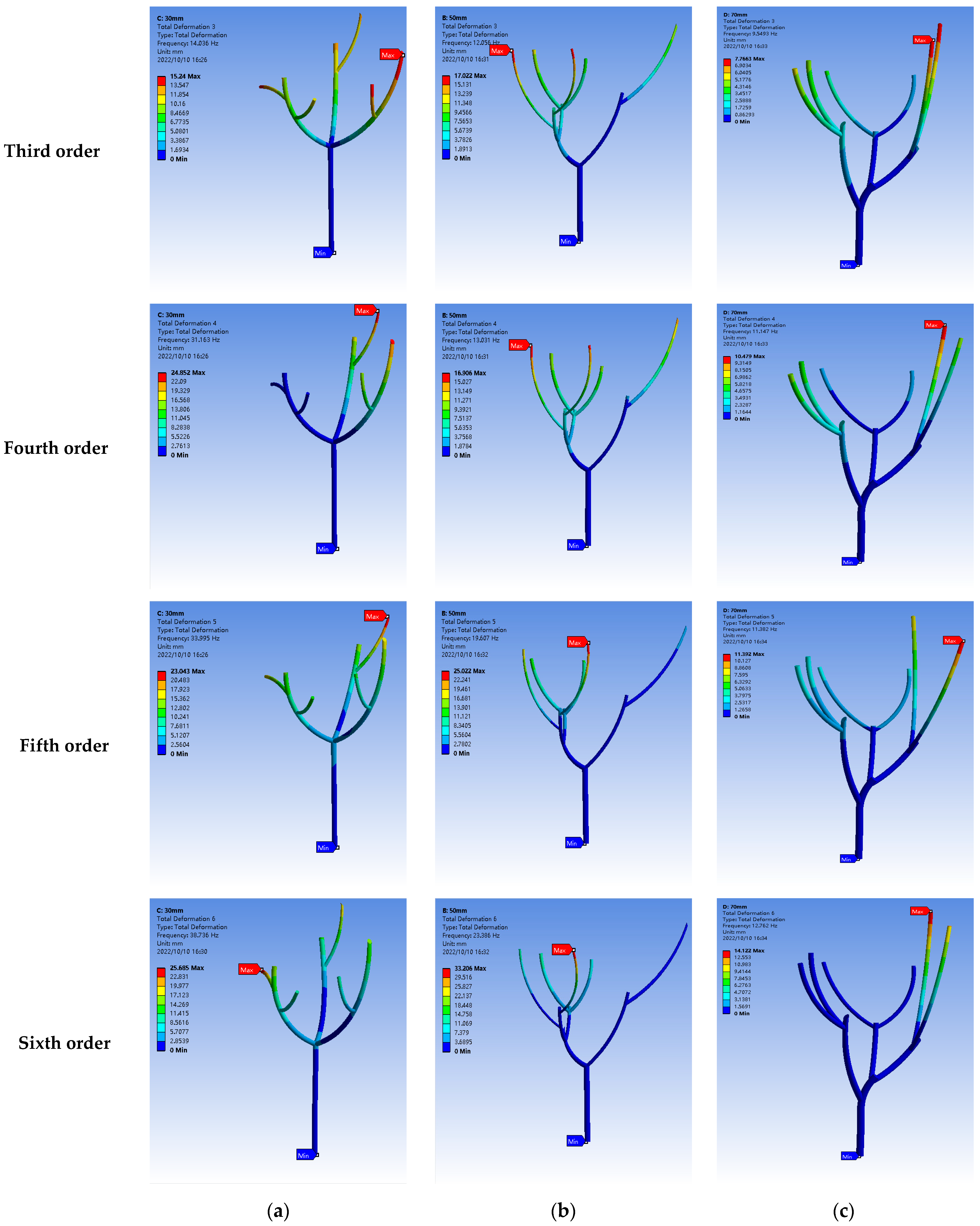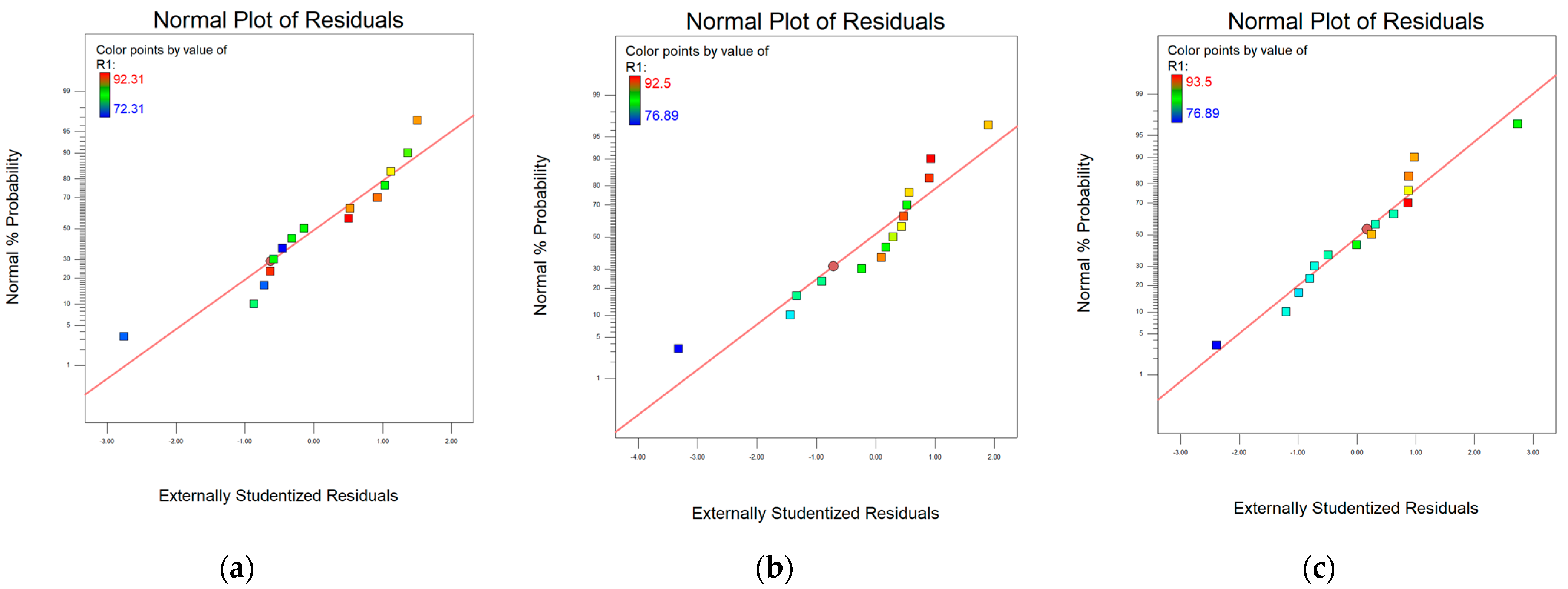1. Introduction
Red jujube is a fruit that holds immense economic value in China [
1] and is considered significant in the country’s food supply [
2]. Although the cultivation of red jujubes has developed into large-scale production involving standardized techniques [
3], the traditional method of harvesting still relies predominantly on manual labor [
4], making it time-consuming, labor-intensive, and expensive [
5]. However, significant advancements have been made in mechanized harvesting methods over the past few decades [
6]. Vibratory harvesting is regarded as one of the most effective means to reduce harvesting costs [
7].
Vibratory harvesting is a method of harvesting crops that involves applying mechanical vibrations to the branches of fruit trees to cause them to vibrate and facilitate fruit removal [
8]. This method has been widely adopted for harvesting various crops. Researchers have developed many vibratory harvesters, such as the vibratory coffee harvester designed by Yu et al. [
9] where the harvesting rate of mature and immature coffee was 92.22% and 8.33%, respectively, and the hazard rate was 5.23%. For red jujube harvesting, Zheng et al. [
10] designed a catch-and-shake robot to identify tree trunks with RGB-D cameras and find suitable vibration shaking points for vibrating and harvesting jujube trees by manipulators. Meng et al. [
11] created a 4YS-24 red jujube harvester that uses mechanical vibratory fruit drop principles, achieving a fruit harvesting rate of 91.40% in field tests. Fu et al. [
12] designed a fully hydraulic self-propelled red jujube harvester, achieving a ground red jujube harvesting rate of 45.1%, a tree red jujube harvesting rate of 93.2%, a loss rate of 2.9%, and a damage rate of 0.9%. Despite these successes, vibratory harvesting still faces challenges, including low efficiency, high fruit damage rates, and low fruit removal efficiency caused by either too little or too much vibration energy. These factors can lead to fruit leakage harvesting or damage to both fruit and tree trunks [
13].
To enhance the efficiency of vibratory harvesting, it is necessary to study the fruit vibration mechanism. Zhao et al. [
14] used physical tests to establish a three-dimensional model of a shrub and a material mechanics model of its branches. They conducted a modal analysis of the shrub using the finite element method and modal experiments with acceleration sensors and impact hammers to determine the optimized resonant frequency of 2 Hz. Field experiments demonstrated that vibrating branches at this frequency resulted in fruit shedding. Zhang et al. [
15] investigated the dynamic response characteristics of grape berries in the X, Y, and Z directions using a dynamic model and finite element analysis. They found that the optimal vibration frequency of the harvesting mechanism should be around 10 Hz to avoid resonance that leads to multiple fruit shedding. Bentaher et al. [
16] utilized the finite element method to simulate the process of vibration harvesting for the “Chemlali” olive tree. They developed an equation for the excitation force as a function of the shaker characteristics, including the eccentricity value, unbalanced weight, and rotation frequency. The structural response of the olive tree was also analyzed in relation to the type, position, and excitation frequency of the shaker. Liu et al. [
17] developed a theoretical model of walnut vibration during harvesting, analyzed vibration response in terms of motion morphology and separation force, and verified the model through field tests. Theoretical and experimental results showed that the response amplitude and frequency of walnuts are proportional to the vibration amplitude and frequency of the equipment, respectively, while the separation force is proportional to the square of both parameters. Yan et al. [
18] examined the influence of the ginkgo canopy structure on its vibration characteristics. Two representative ginkgo canopy structures, monopodial branching and sympodial branching, were chosen by assessing 273 ginkgo tree canopies. Subsequently, their vibration spectra were meticulously analyzed. Vibration models were established for ginkgo trees with different canopy shapes, allowing for an in-depth analysis of their vibration states at various frequencies. The results suggest that the spectral curve of dromedary ginkgo trees exhibits a prominent intrinsic frequency above 30 Hz, corresponding to the frequency of maximum acceleration. On the other hand, y-branch ginkgo trees display a maximum acceleration frequency ranging from 20 to 30 Hz, which falls within the typical excitation range observed in fruit trees. These findings highlight the superior vibration characteristics of the y-shaped canopy structure in ginkgo trees. Lang et al. [
19,
20] analyzed the relationship between the height of excitation, vibration frequency, and the vibration response characteristics of cherry trees by measuring parameters such as the rotational center, simplified mass, elastic modulus, and dynamic damping coefficient of the cherry tree. They also identified the most effective clamping height for the vibration sieve. These studies provide a theoretical basis for designing the optimal input vibration parameters for harvesting devices to improve fruit harvesting rates.
Several studies have investigated the vibration mechanism of jujube trees. Wang et al. [
21] developed a model to examine the relationship between the harvesting rate of red jujubes and factors such as vibration amplitude, vibration frequency, and vibration time. They utilized a quadratic regression generalized rotational combination test method for constructing the model and investigated the essential parameters of compact dwarf red jujube harvesting machinery. Fu et al. [
22] simplified the jujube “branch-stalk-fruit” system as a double pendulum vibration model to analyze natural frequencies and obtain the natural vibration frequencies of the system (14.69 Hz and 17.26 Hz). Constant-frequency vibration tests were conducted on jujube tree samples at various amplitudes (3 mm, 5 mm, and 7 mm) and frequencies (12–24 Hz) to investigate the effects of vibration frequency and amplitude on the instantaneous acceleration of each branch. DHDAS analysis showed a correlation between vibration frequency and instantaneous acceleration, while amplitude did not have a significant effect. Peng et al. [
23] utilized a finite element method to anticipate the response of jujube trees to shaker excitation and to determine the relationship between the response and excitation frequency. They conducted field experiments on three jujube trees, replicating five different shaker frequencies (5, 10, 15, 20, and 25 Hz). The researchers modeled the trees using Autodesk Inventor 2014 and then simulated them in ANSYS 15.0 using the finite element method. The results showed that the average correlation coefficient between the experimental and simulated accelerations was 0.62. The measured and simulated derived average accelerations showed good agreement in terms of variation trends. The researchers concluded that the simulation method could be employed to investigate the vibration response of jujube trees under shaking table excitation. Peng et al. [
24] used spectral analysis to find the optimal frequency range for vibrational harvesting of winter jujube, and the first three orders of intrinsic frequencies were in the frequency range of 5–25 Hz. Finally, the fruit shedding rate was tested in the resonance frequency range, and the maximum shedding rate of crisp ripe fruits was found when the frequency was between 12.5 and 17.5 Hz. Yang et al. [
25] developed a dynamics model of the jujube tree and theoretically solved the resonant frequencies and corresponding modes of the jujube tree system. ANSYS finite element analysis was performed on the established solid model of the jujube tree. The analysis of the modal vibration response of the jujube tree revealed that the motions of different branches were significantly different and independent, and the response of the jujube tree showed good consistency at the low frequency of 5.47 Hz. The harmonic response analysis shows that the excitation frequency is within 0–10 Hz, and the acceleration response increases with the increase of the excitation position height at the same vibration frequency but the overall change pattern and trend of the acceleration response remains the same, and the maximum acceleration response frequency is 5.2 Hz. The selected frequency range of the vibration device and fruit tree rigid-flexible coupling is 4–8 Hz. Zhuo et al. [
26] studied the vibration response characteristics of jujube branches and evaluated the vibration effect of jujube branches based on different excitation parameters using a response surface method, obtaining an optimized vibration effect. The low-order natural frequencies of dense jujube branches were mainly concentrated in the range of 6–22 Hz, and the strongest vibration responses were found at 17.5 Hz, 18.0 Hz, and 22.5 Hz. Li et al. [
27] conducted a comprehensive finite element modeling and simulation analysis of the jujube tree. Initially, SolidWorks 2016 software was utilized to create a 3D model of the jujube tree, which was then imported into ANSYS 18.0. Subsequently, modal and harmonic response analyses were performed using ANSYS 18.0. The analysis results indicated that each branch of the jujube tree exhibited a certain level of independence, implying that the vibration of the tree primarily occurred at the branch level. Moreover, it was observed that the vibration acceleration of the jujube tree was significantly higher at excitation frequencies of 12 Hz, 17 Hz, and 19 Hz. At excitation frequencies of 12 Hz, 17 Hz, or 19 Hz, the jujube tree demonstrated substantial stress-deformation responses. Consequently, it is feasible to conduct vibration harvesting tests at a frequency of 12 Hz or 17 Hz. For the harvesting test, a vibration frequency within the range of 12–20 Hz can be selected. These studies specifically examined the vibration mechanisms of jujube trees or jujube branches. By conducting simulation analyses and field experiments, researchers successfully identified vibration parameters that yield superior effects on jujube trees. These findings provide valuable insights for designing the optimal input vibration parameters for vibratory harvesting devices to improve the harvesting rate of jujubes.
In summary, compared with other harvesting methods, the vibration harvesting method can harvest red jujubes uninterruptedly with a certain vibration frequency and vibration amplitude, which is important to improve the mechanized harvesting efficiency of red jujubes. However, the current research primarily concentrates on the equipment for harvesting red jujubes through vibration. There is a limited amount of research on the vibration mechanism of jujube trees, which is mainly based on simplified models of jujube trees and branches. The effects of intrinsic frequency of jujube trees, various vibration frequencies, and different vibration amplitudes generated by the excitation device on the vibration characteristics and instantaneous acceleration of jujube branches are examined through finite element analysis and harmonic response analysis to seek a range of jujube tree vibration parameters with better vibration effects. In the domain of red jujube vibration harvesting devices, prevailing studies employ fixed vibration frequencies and amplitudes to vibrate jujube trees. While this approach endeavors to select optimal vibration parameters for red jujube harvesting by delving into the vibration mechanism of jujube trees and their branches, it fails to account for the diverse diameters among individual jujube trees, which easily results in tree trunk damage, thereby affecting the subsequent year’s red jujube yield. Moreover, jujube trees with distinct diameters exhibit substantial discrepancies in inherent frequencies and branch vibration characteristics. Consequently, the adoption of fixed vibration frequencies and amplitudes for red jujube harvesting leads to a diminished harvest rate. This study introduces a novel vibration parameter optimization method that takes into consideration the different diameters of jujube trees. It aims to adjust the vibration frequency and amplitude of the red jujube vibration harvesting device based on the optimal vibration parameters specific to each jujube tree diameter. This endeavor seeks to attain better vibration effects and enhance the jujube harvest rate. The findings of this study serve as a theoretical foundation for determining the optimal vibration harvesting parameters for jujube trees of diverse diameters, while also providing technical support for improving the vibration harvesting device of red jujube and improving the vibration harvesting efficiency. This study will be conducted in the following three aspects:
To establish a model of the forced vibration dynamics of jujube trees to identify the key factors in the vibration process and provide a theoretical basis for modal analysis and harmonious response analysis;
To investigate the intrinsic frequency characteristics of jujube trees of different diameters by constructing 3D models and conducting modal analysis, and conducting harmonic response analysis to investigate the displacement response relationship and acceleration response relationship of red jujube trees using different vibration factors at different diameters;
To investigate the effect of different vibration factors on the harvesting efficiency of jujube trees with varying diameters, single-factor tests of vibration parameters were conducted to determine the impact of each factor on the jujube harvesting rate. Furthermore, multi-factor tests were carried out to identify the optimal vibration parameters for jujube trees of different diameters.
